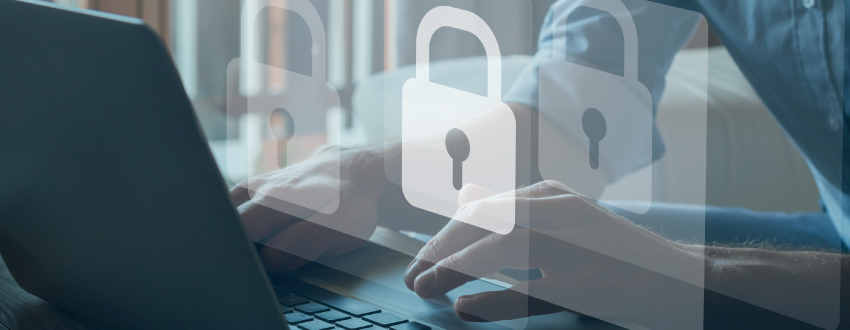The Top 10 Cybersecurity Trends of 2021

Don’t Ignore These Top Cybersecurity Trends
Cybersecurity is one of the key trending topics in this current environment. It’s an evolving landscape that’s always changing and being taken to new heights. As it’s always growing so are the top emerging cybersecurity trends, here are the top cybersecurity trends of 2021.
Trend Number One: The Remote Workforce is Here to Stay
Due to the COVID-19 pandemic, the newly remote workforce landscape has made a huge impact on the world of cybersecurity – and this isn’t going to change. According to a recent Upwork survey, about one in four Americans (26.7 percent) are working remotely and by 2025, 36.2 million Americans will be remote – this is an increase of 16.8 million people compared to pre-pandemic rates.
Although most organizations have probably ironed out the most impactful kinks compared to when this remote shift first started trending, organizations choosing to continue taking part in a fully remote or hybrid work environment are still having to consider the risk it brings to cybersecurity.
With a remote workforce comes several existing security threats including social engineering attacks, phishing schemes, unencrypted file sharing, the possible exploitation of common home devices, and more. To combat these threats organizations must stay committed to engaging and educating employees on the growing number of cybersecurity risks, how to secure their network, and how to avoid incidents like phishing. Keeping file transfers secure both in transit and at rest with a managed file transfer (MFT) solution and establishing a work from home cybersecurity policy should also be made a top priority.
Something Important to Note: A remote workforce increases the average total cost of a data breach. According to the Cost of a Data Breach Report 2021, at organizations where remote work was a factor in the breach, the average total cost of a data breach was $4.96 million. When remote work was not a factor in causing the breach, the average total cost was $3.89 million. The difference in cost between breaches was $1.07 million, or 24.2 percent.
Trend Number Two: Ransomware is a Growing Threat
Ransomware is one of the most widespread threats to any organization’s data security. In fact, it’s estimated that a business will fall victim to a ransomware attack every 11 seconds. It has become so popular as a form of attack that it has grown by 485 percent globally year-over-year in 2020 alone, according to the 2020 Consumer Threat Landscape Report.
As a top cybersecurity trend, ransomware attacks have continued to plague organizations with data theft and crushing economic blows with the average total cost of a ransomware breach now at a staggering $4.62 million according to the Cost of a Data Breach Report 2021.
One reason for this growth might be due to the appearance of ransomware-as-a-service (RaaS) and/or ransomware kits on the dark web, which can be purchased for a low price and require little to no technical knowledge to deploy.
As 2021 continues to progress, it’s likely we’ll see even more reports from major players indicating that their year-over-year growth in ransomware threats is trending up.
Trend Number Three: The Rise of Artificial Intelligence (AI)
The use of artificial intelligence (AI) is constantly evolving and growing in sophistication and capability, so it’s no surprise that companies are taking advantage and honing AI’s trendsetting ways by making it a part of their security infrastructure.
AI is increasingly being utilized to build automated security systems that replace human intervention (and human error), making it possible for organizations to analyze massive amounts of data at a much faster rate. This is beneficial for large companies dealing with a considerably larger quantity of data, as well for small or mid-sized companies whose security teams may not be as advanced or overstretched with insufficient resources.
Although criminal networks are taking advantage of AI to automate their attacks, AI presents a considerable opportunity for stronger threat detection among businesses. As a matter of fact, organizations who suffered a data breach, but had AI technology fully deployed, saved an average of $3.58 million in 2020 and $3.81 million in 2021 according to the Cost of a Data Breach Report 2021.
Trend Number Four: Multi-Factor Authentication and the Mobile Target
While passwords remain a tried-and-true standard for cybersecurity best practices, multi-factor authentication (MFA) is regarded as the gold standard of authentication as it adds an extra degree of security and defense against data breaches and malicious attacks.
MFA adds another layer of protection by utilizing two or more separate factors to successfully authorize users in order to grant them access to sensitive data. MFA is critical to security and can help to keep unwanted intruders out, however, malicious actors are finding new ways to bypass it – specifically, authentication carried out via Short Message Service (SMS) or phone calls.
SMS has some built-in security, but the messages sent – including those for authentication purposes – are not encrypted. Essentially, this means that anyone with malicious intent can carry out an automated man-in-the-middle attack – a form of eavesdropping attack, where attackers interrupt an existing conversation or data transfer – to obtain one-time passcodes in plain text.
This creates a vulnerability for activities such as online banking where authentication is often done via SMS. In fact, mobile banking malware was up 50 percent in the first half of 2019 and researchers from the University of Cambridge found that 87 percent of all Android smartphones are exposed to at least one critical vulnerability on average. While the McAfee Mobile Threat Report 2021 detected a 141 percent increase in banking Trojan activity between Q3 and Q4 in 2020.
In 2020, Microsoft advised users to stop using phone-based MFA and instead recommended using app-based authenticators and security keys.
Additional trending mobile threats include specialized spyware designed to spy on encrypted messaging applications, social engineering and data leakage, Wi-Fi interference and out-of-date devices, poor password hygiene, mobile ad fraud, and cryptojacking attacks.
Trend Number Five: The Internet of Things (IoT)
The expanding Internet of Things (IoT) refers to physical devices other than computers, phones, and servers that also connect to the internet, share data, and create more opportunities for cybercrime. Examples of IoT devices include wearable fitness trackers, smartwatches, smart refrigerators, and voice assistants like Google Home and Amazon Echo.
It’s estimated that by 2026 there will be 64 billion IoT devices installed around the world – that’s a lot of smartwatches! The remote workforce landscape (the first trend mentioned) is a concept that is truly helping to drive this trend forward at such a rapid pace. However, compared to laptops and smartphones, most IoT devices have fewer processing and storage capabilities, which can make it harder to employ firewalls, antivirus, and additional security applications needed to sufficiently safeguard the devices.
Trend Number Six: The Increase in Cloud Security Threats
Cloud vulnerability continues to be one of the biggest cyber security industry trends. Although cloud services offer a range of benefits – scalability, efficiency, and cost savings – they are also a prime target for attackers. Misconfigured cloud settings are a significant cause of data breaches, unauthorized access, account hijacking, and insecure interfaces.
For example, according to the Cost of a Data Breach Report 2020 misconfigured cloud settings were a leading cause of data breaches in 2020 – and resulted in an average total cost of $4.41 million, an increase by more than half a million dollars. Cloud security threats also include cloud migration issues as migration to the cloud increased the cost of the breach by $267,469 in 2020.
Trend Number Seven: Social Engineering is Getting Smarter
Social engineering, an attack that involves manipulating others so they give up confidential information is not a new concept. However, these kinds of attacks are evolving, getting smarter, and becoming more widespread among the growing remote workforce.
As well as traditional phishing attacks, there has also been an upsurge in the following:
- Whaling attacks – These are highly targeted phishing attacks aimed at executive leadership and masquerading as a legitimate email.
- SMS phishing – This is sometimes known as ‘smishing’ and has gained prominence due to the popularity of messaging apps like WhatsApp, Slack, Skype, and others. Attackers use these platforms to try to trick users into downloading malware onto their phones.
- Voice phishing – Also known as ‘vishing,’ hackers pose as IT staff contacting customer service representatives and trick them into providing access to an important internal tool. This gained prominence after a Twitter hack in 2020.
- SIM jacking – This involves malicious actors who contact the representatives of the mobile operator of a particular client and convince them that their SIM card has been hacked, potentially gaining access to the digital contents of the target’s phone.
Trend Number Eight: Data Privacy as a Discipline
One of the key data security trends is the rise of data privacy as a discipline in its own right. Over the past decade or so, cyberattacks have led to the exposure of millions of Personally Identifiable Information (PII) records. When you consider this, coupled with strict data privacy laws worldwide like the EU’s GDPR, data privacy is increasingly being prioritized.
The truth of the matter is organizations that don’t comply with key regulations and consumer expectations are at a high risk of costly fines, bad publicity, and lost consumer trust. Data privacy affects almost all aspects of an organization, and in return, organizations are placing an added emphasis and commitment to recruiting data privacy officers, multi-factor authentication, encryption in transit and at rest for sensitive file transfers, ensuring role-based access control, and more.
Trend Number Nine: Real-Time Data Visibility is Key
Without a comprehensive picture of an organization’s entire technological aspect, cybersecurity management efforts are weakened. To combat this, introducing automation and real-time data visibility within organizations is a great help at managing data protection to the fullest degree possible.
To keep it simple, the only way to prevent data loss is to know exactly where your data is. Implementing automation and solutions that help you gain invaluable, real-time insight into your data not only strengthens your organization’s ability to mitigate data theft and breaches, but it also heightens operational efficiency and improves overall resilience to cybersecurity threats.
Trend Number Ten: Insider Threats Are Still Prevalent
While it’s far easier to believe that all cybersecurity threats come from external forces, organizations must not ignore the possibility of threat actors within their own company. As the remote workforce expands, the chance of an insider threat grows too. As organizations continue to hire remote-only employees who are scattered across the world and who may only live as a person you know virtually, companies must pay attention to this trend.
While this can be difficult to stomach, the numbers don’t lie – 15 to 25 percent of security breach incidents are caused by trusted business partners. Insider threats are very much on the rise and must be taken seriously and seen as a real risk by security leaders. The most important thing to consider is whether organizations have the proper tools and solutions in place to spot and stop them before any harm can be done.
Information taken from the article: The Top 10 Cybersecurity Trends of 2021





